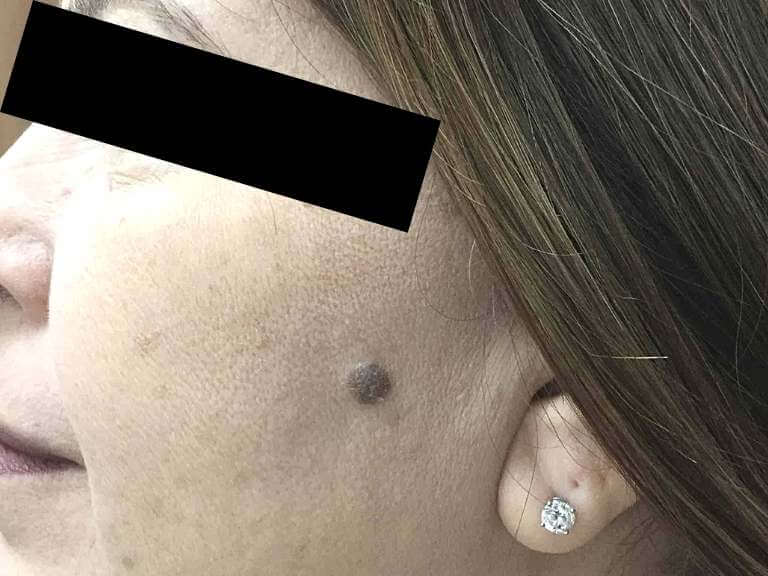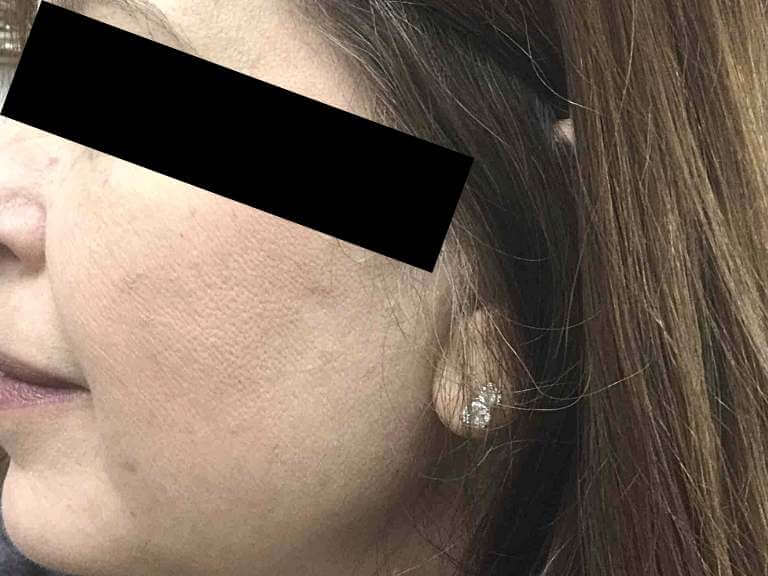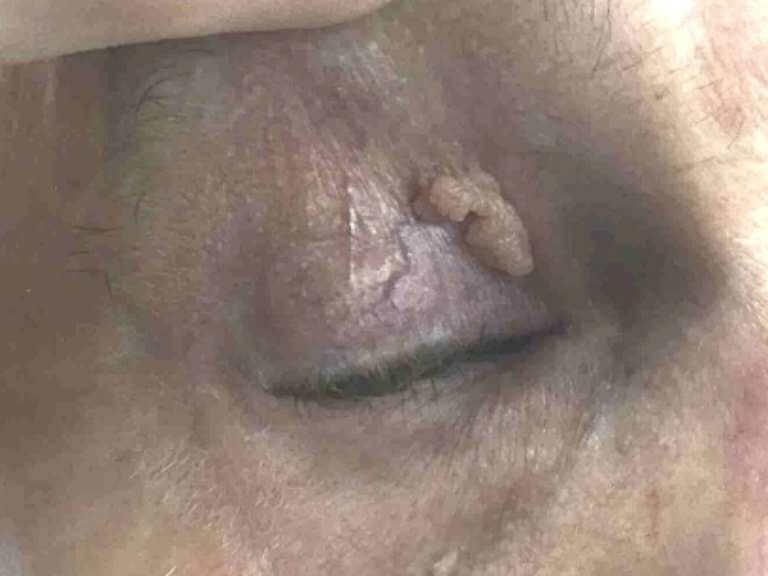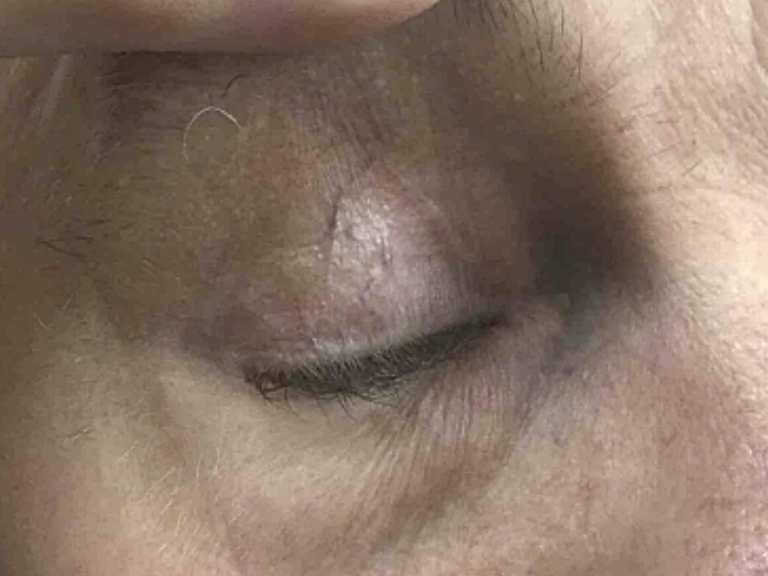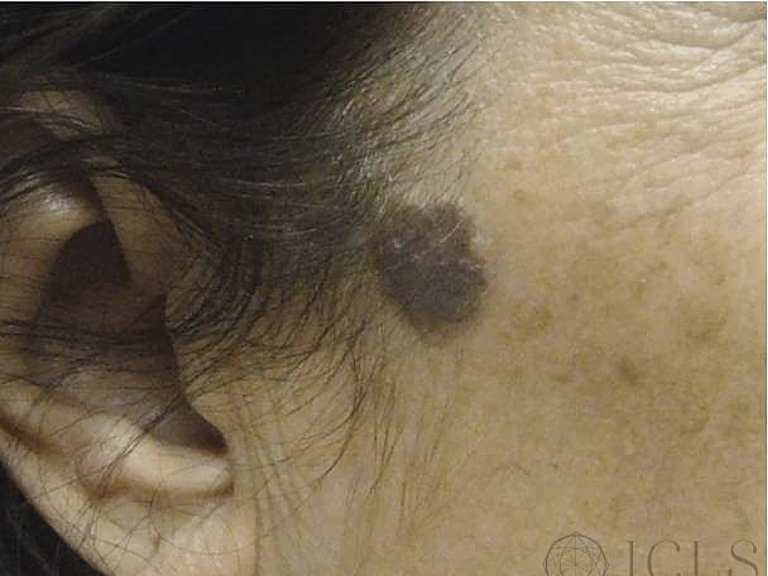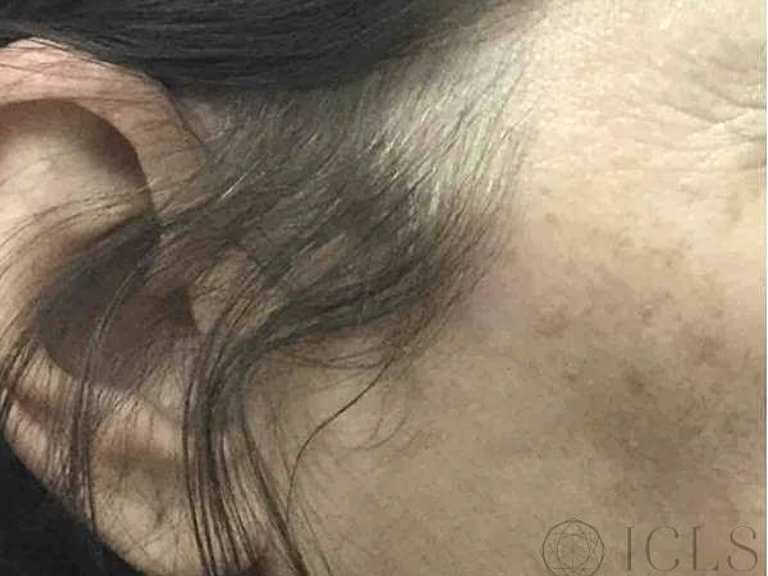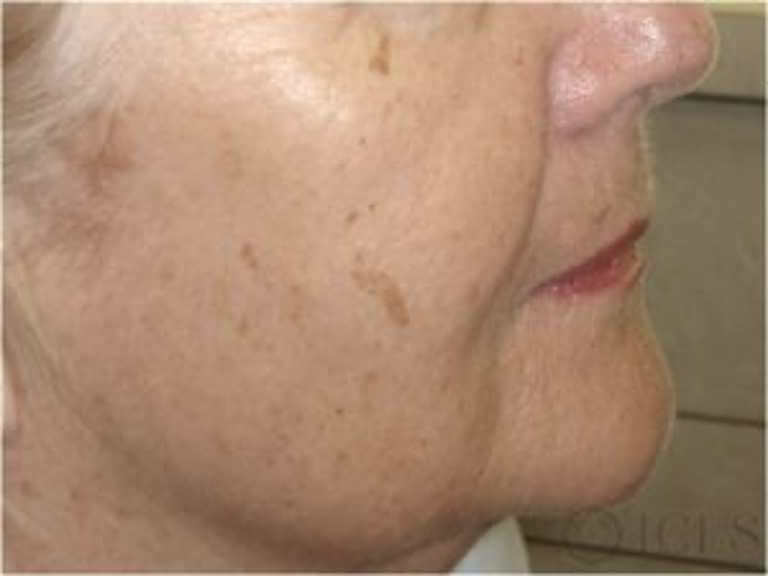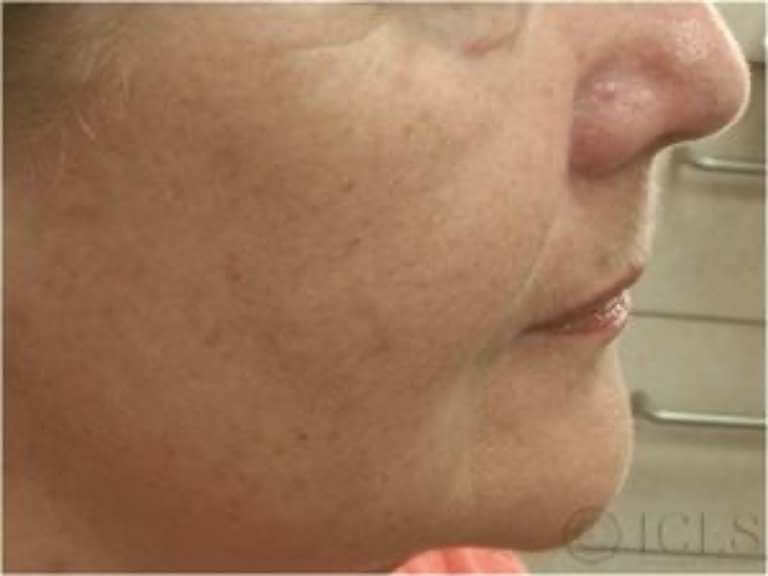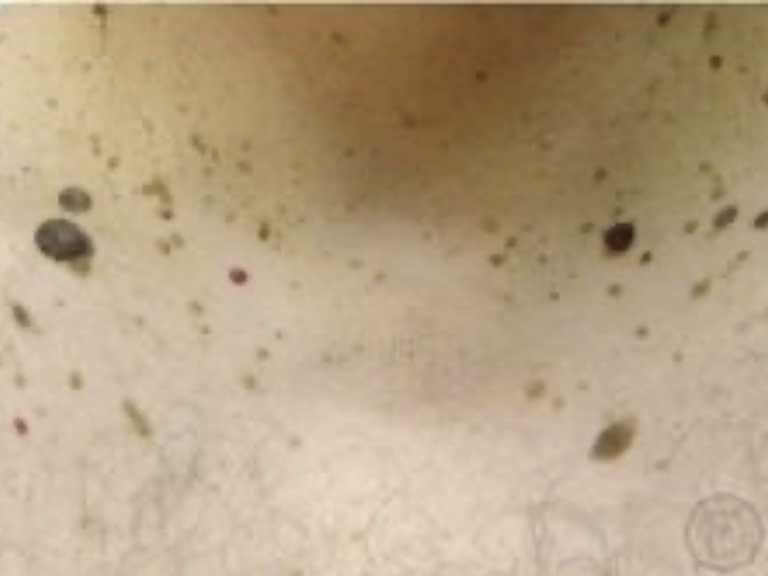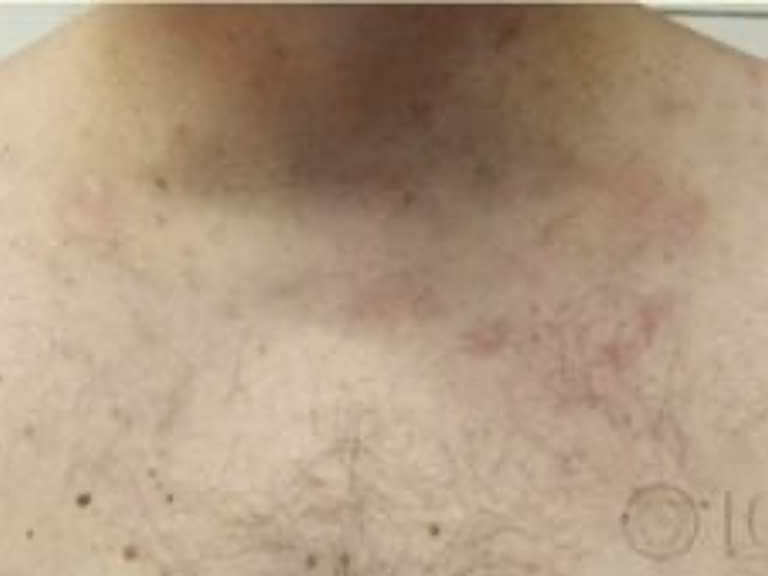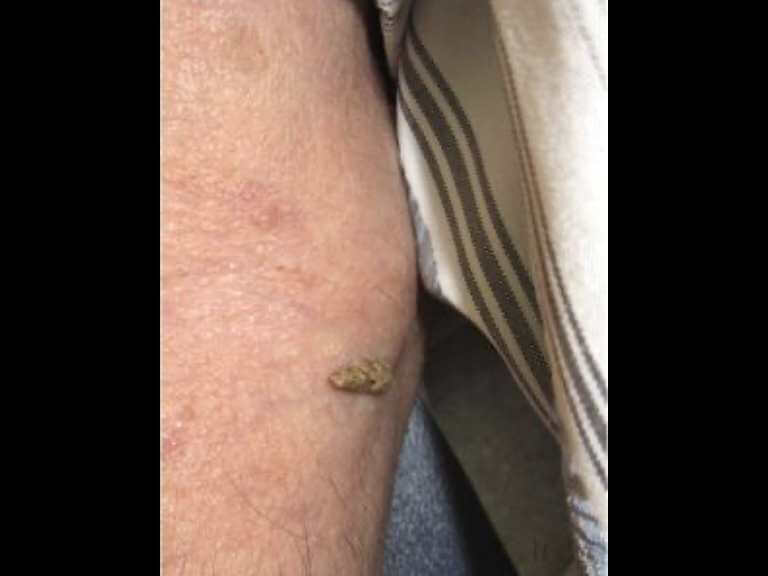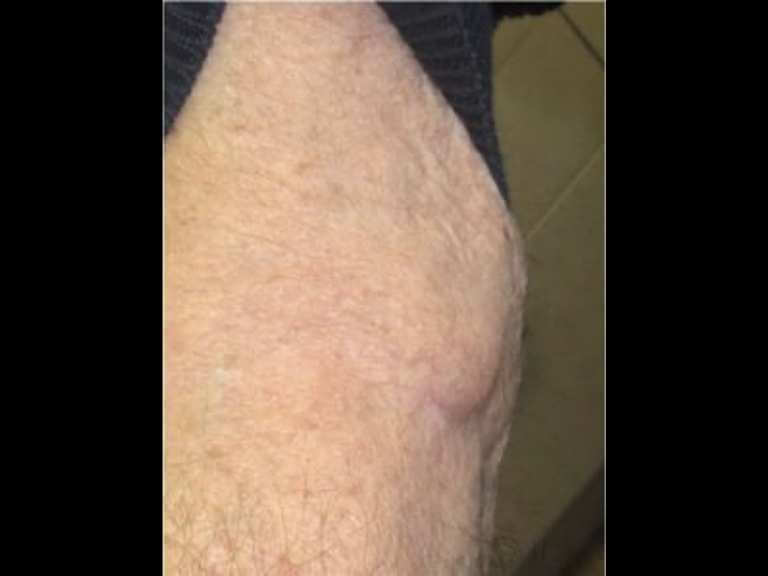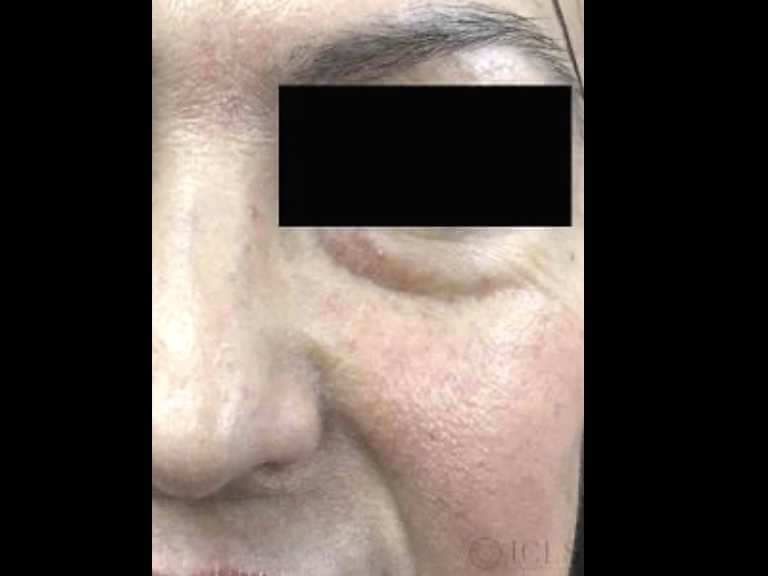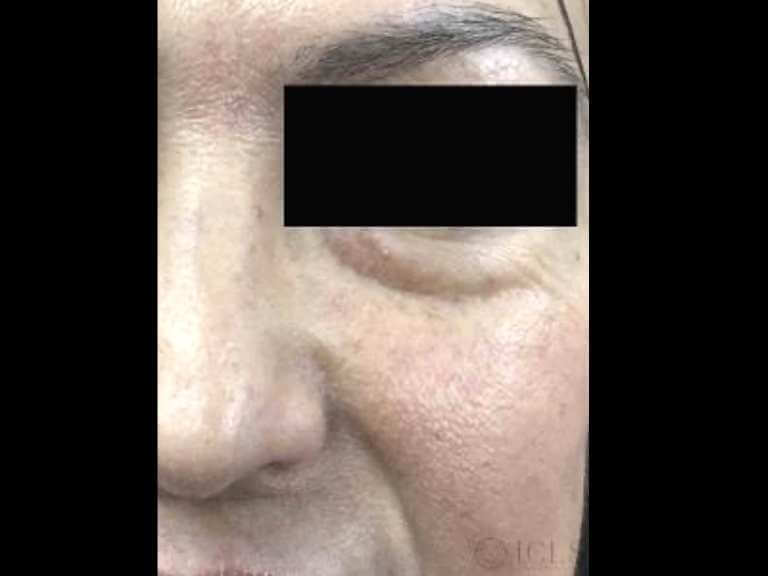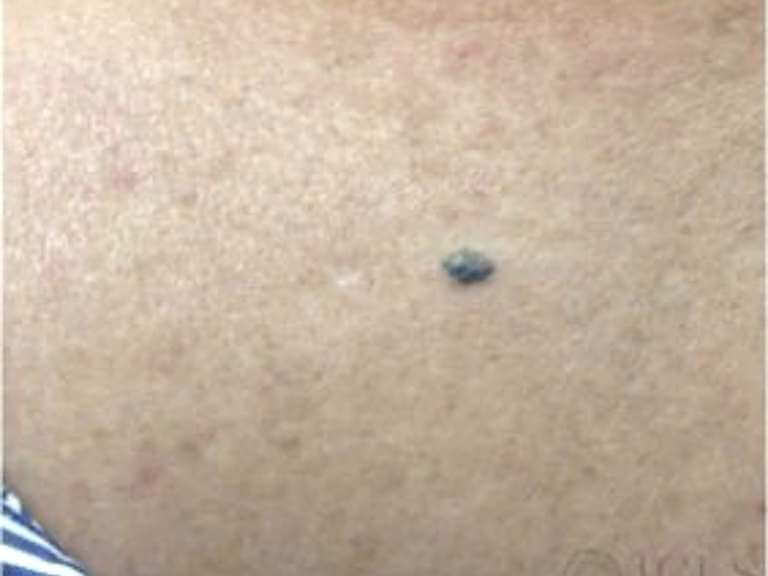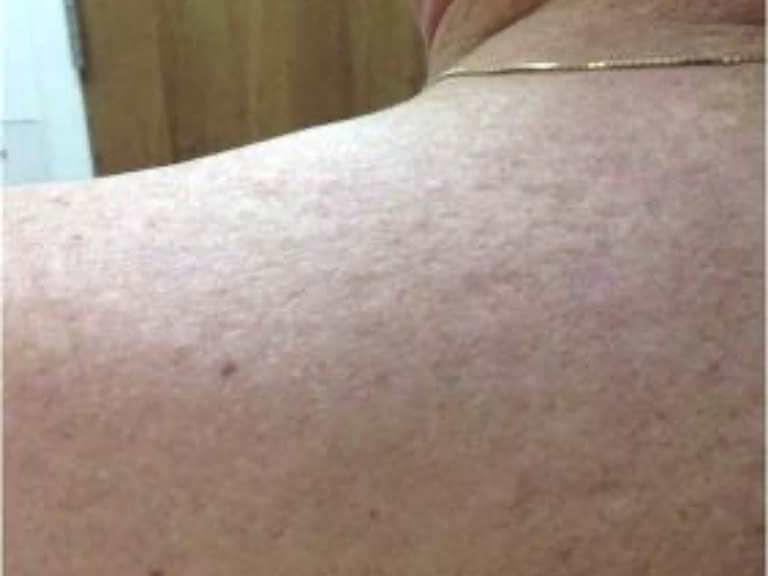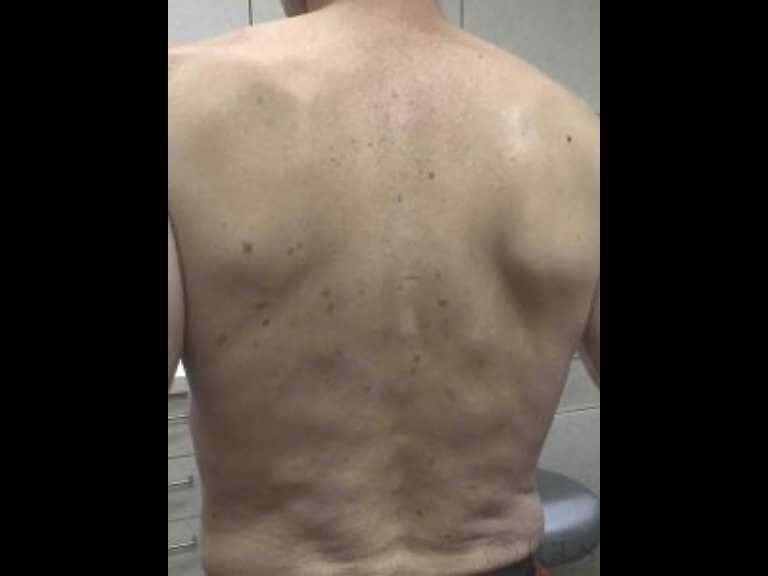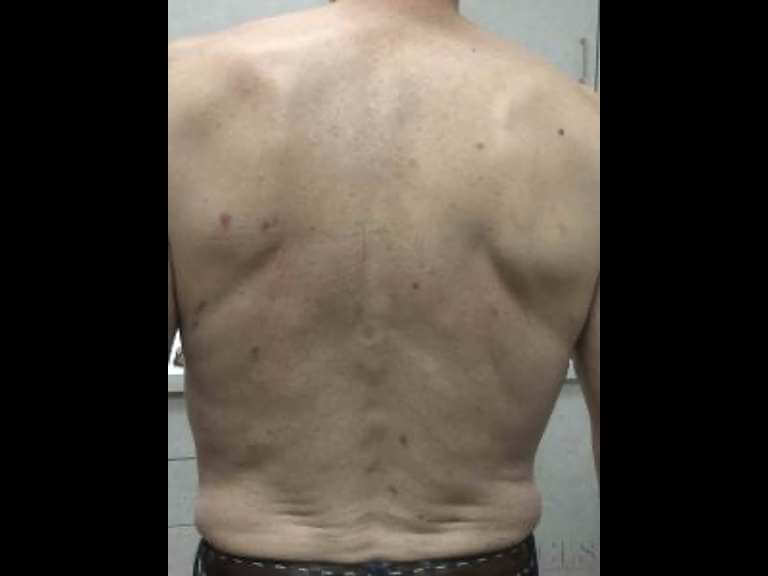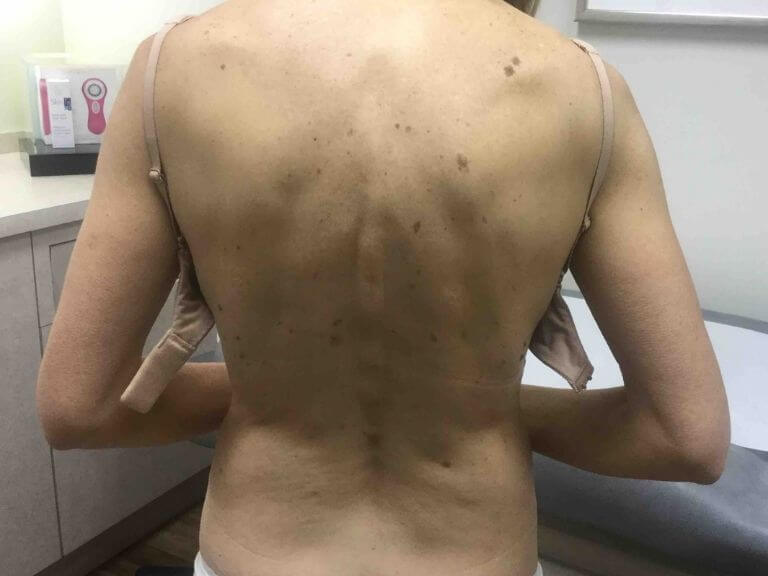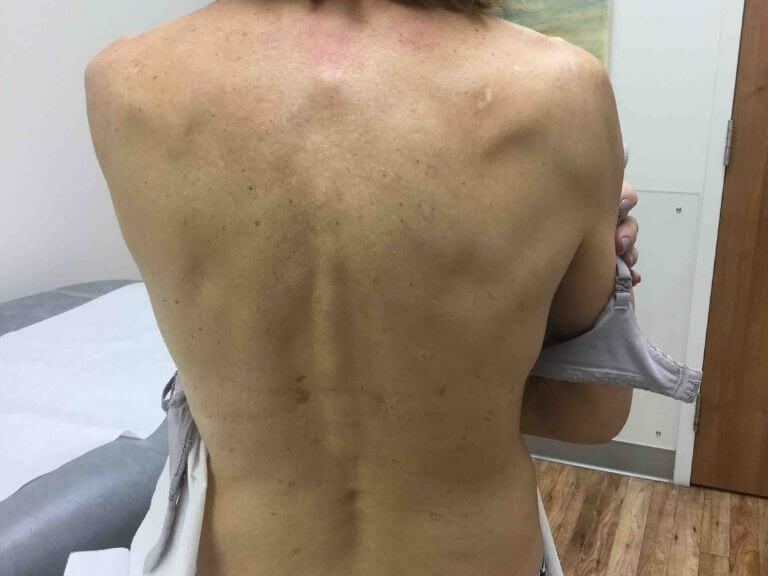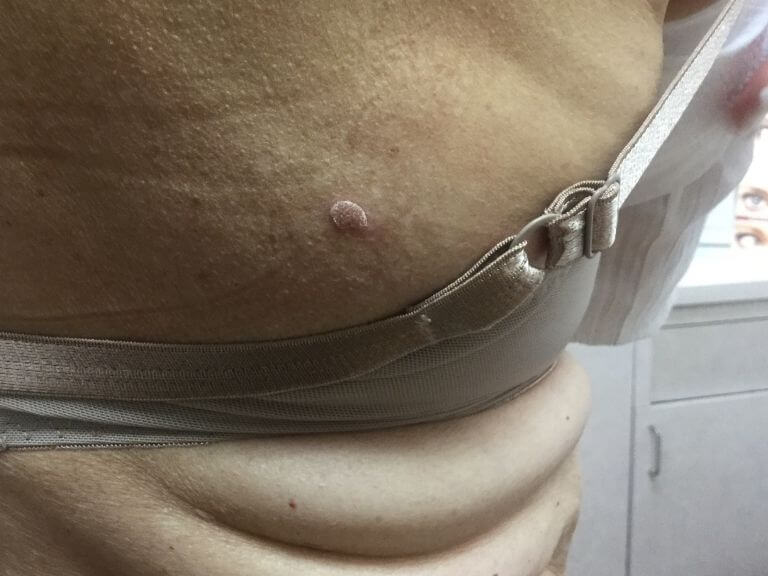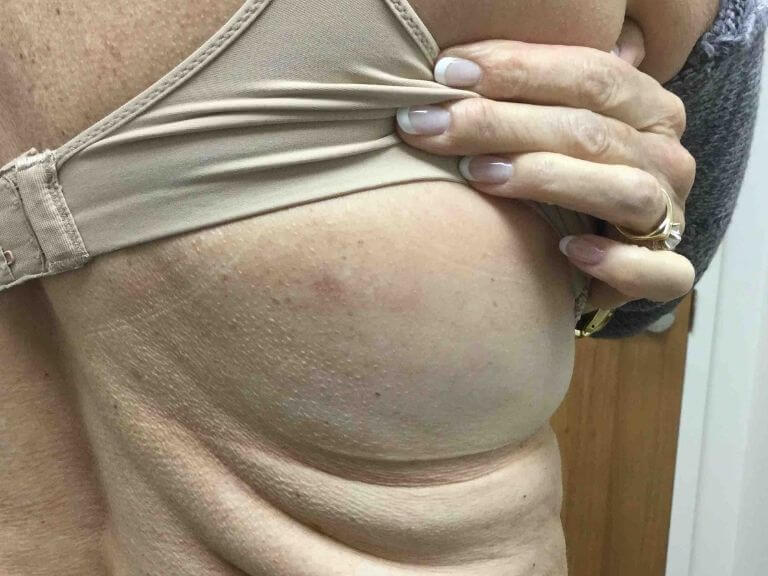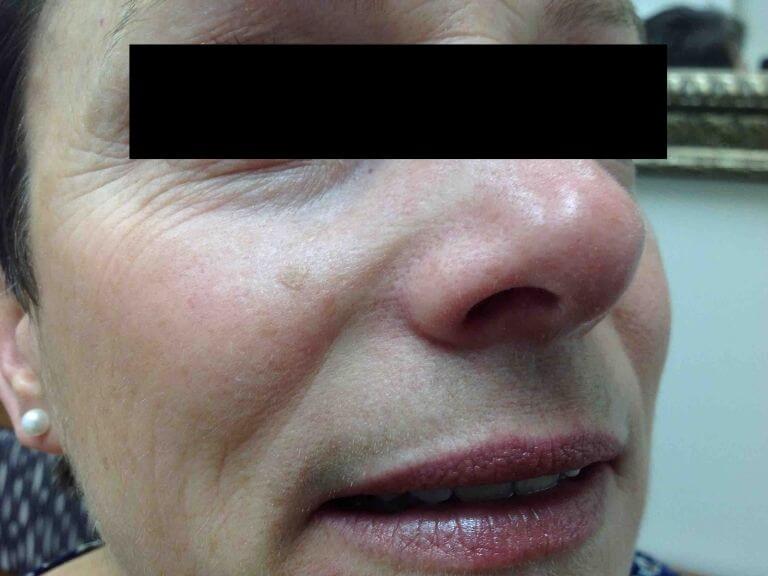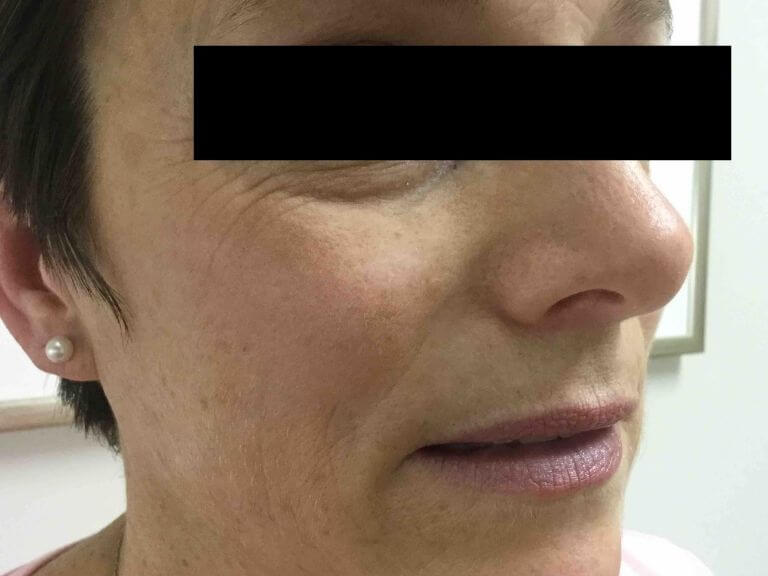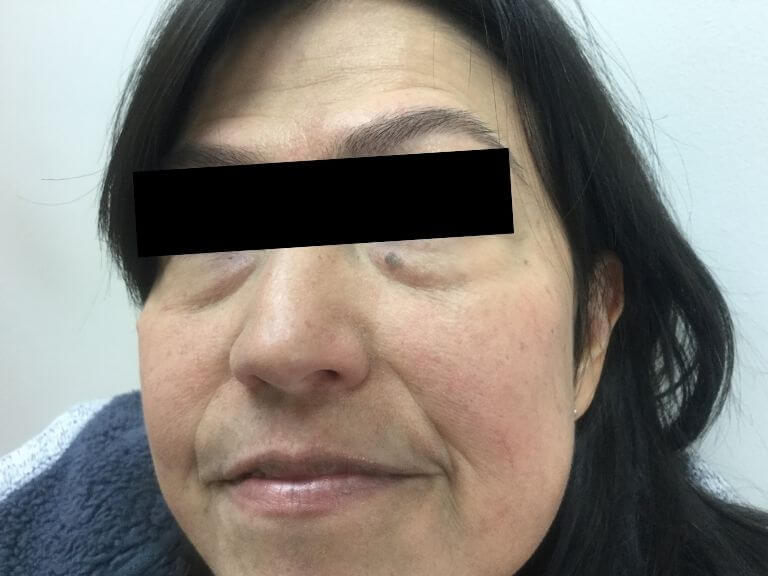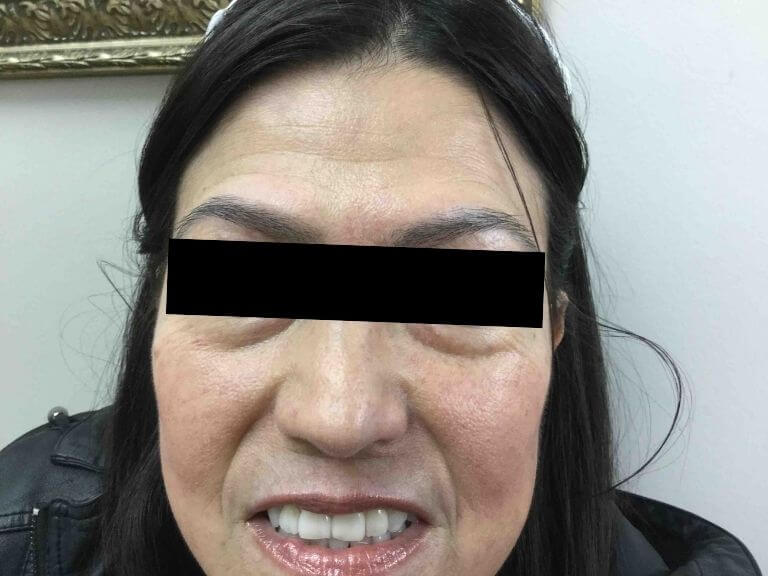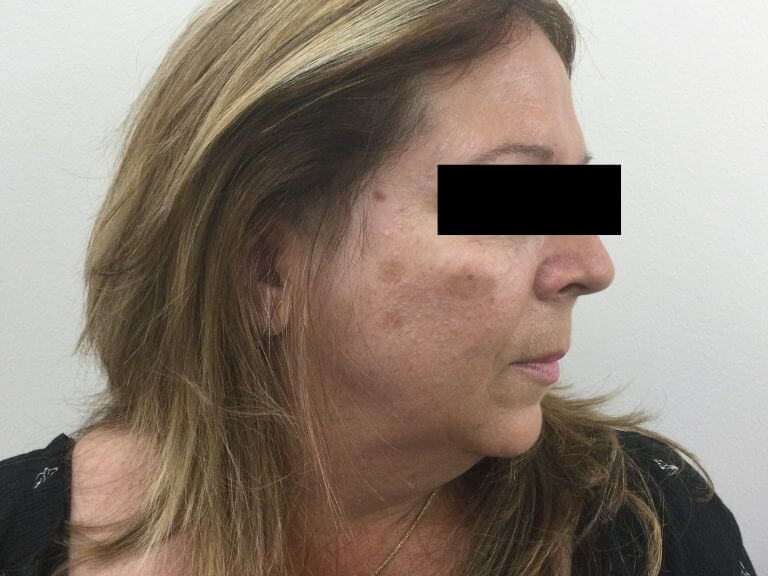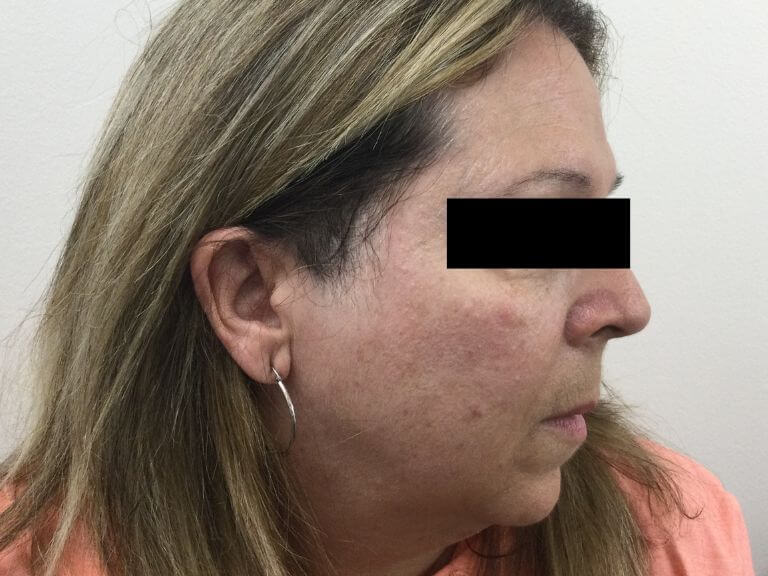Seborrheic Keratosis Treatment in Oakville, Ontario
 Concern
Concern Seborrheic Keratosis or “SK” is a common noncancerous skin growth. These skin growths are looks waxy wart like growth, scaly and slightly raised. They are usually brown, black or light tan in colour and can appear anywhere on the body.
These mild lesions are harmless and not contagious. Over time they can become larger in size and itchy.
Seborrheic Keratosis do not need to be treated, though patients may choose to have them removed for cosmetic reasons or if lesions get irritated or bothersome. Depending on the size and thickness of the lesion, Dr. Sapra will remove using cautery, curettage, shave excision technique, or the Excel V Laser. After removal, the lesion usually does not return, but a new one can occur elsewhere on the body.

Before and After
Photos are for educational purposes only.
Featured Video
Frequently Asked Questions
-
What causes Seborrheic Keratosis?
Unfortunately, the exact cause of Seborrheic Keratosis is unknown, however age and family history are linked. Individuals tend to get more as they get older.

